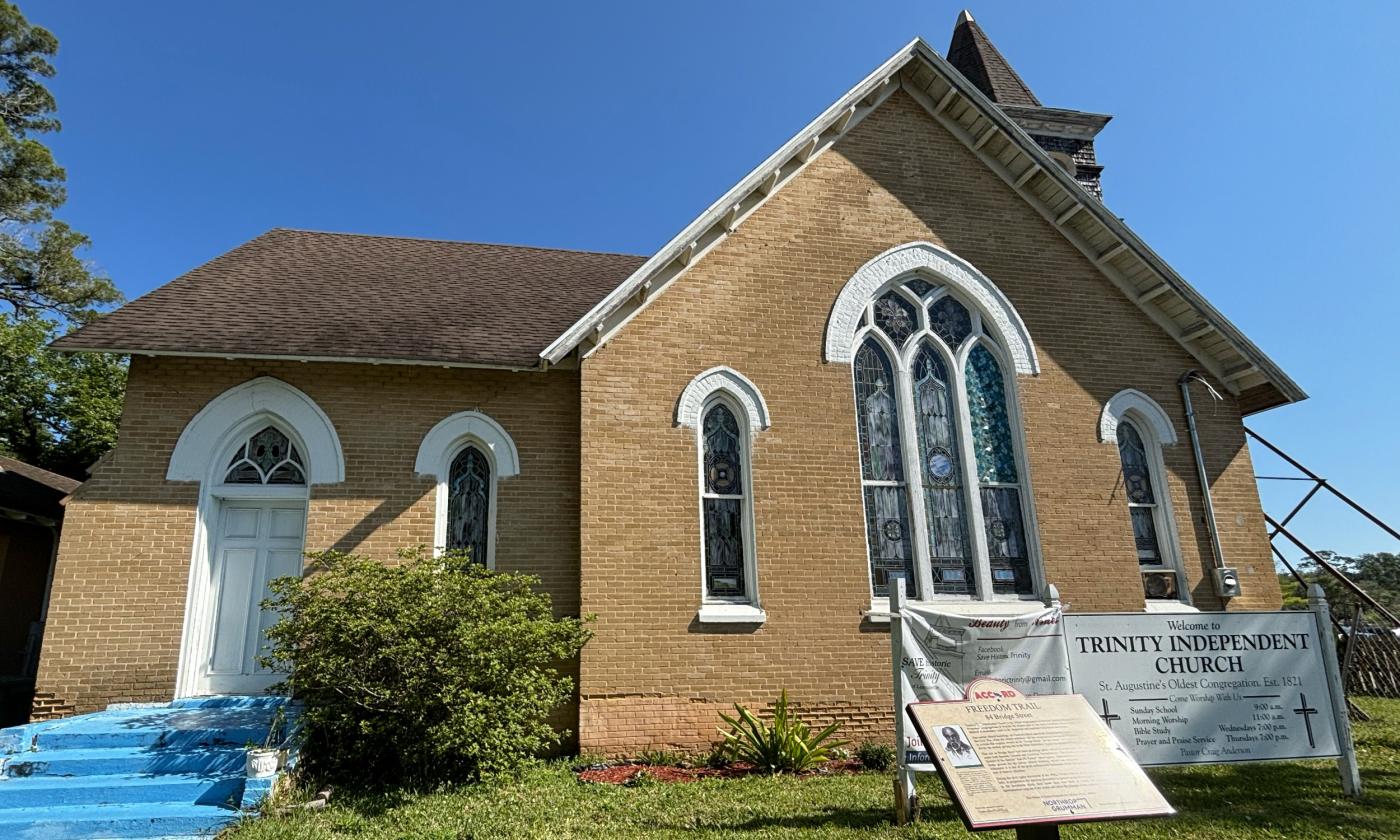Trinity United Methodist Church
Trinity United Methodist Church
The Second Spanish Period (1784-1821)
Spain regained control of La Florida in 1784 after the American Revolutionary War. Because Spain was closely allied with the newly founded United States of America, the Spanish Government of La Florida did not offer the same sanctuary to enslaved people as it did in the First Spanish Period (1565 - 1763).
Philip Edinboro
However, during the Second Spanish Period, San Agustín's citizens included several free Black people. One of those free Black residents — Philip Edinboro — owned this land in the early 1800s and operated an orange grove here. He was the son-in-law of Antonio Proctor, another prominent Black St. Augustinian.
Edinboro was also a cattleman and a butcher who negotiated trade between the Spanish authorities and Indigenous Seminole tribes. It was common for Black polyglots like Edinboro to fill these roles as interpreters.
The American Territorial Period (1821-1845)
When Florida became an American territory in 1821, both Edinboro and Proctor decided to remain in Florida rather than follow the Spanish to Cuba or beyond.
During this time of transition, many Protestant missionaries came to St. Augustine to convert non-believers (or any remaining Catholics).
This was the story of Trinity United Methodist Church, whose first members were Black and White residents of St. Augustine.
Statehood, Civil War, and Beyond
Trinity United Methodist Church's congregation remained integrated until the early 1860s.
Following the end of the American Civil War, the Lincolnville neighborhood began to develop as a community of free Black people and the congregation flourished. The current-day church building at 84 Bridge Street was completed in 1913.
Jack Smith (1793 - 1882)
In the winter of 1873-74, author Constance Fenimore Woolson visited St. Augustine and wrote a semi-fictional story entitled "The Ancient City" based on her travels. A portrait of Mr. Jack Smith was published alongside the text in an 1875 issue of Harper's Magazine with the caption "Uncle Jack."
Mr. Smith was the first Black methodist minister in St. Augustine. He became well known in his final decades and even gave an oral history to historian Buckingham Smith.
That oral history was published by Dr. Patricia Griffin in 2015. Entitled The Odyssey of an African Slave, the account follows "Uncle Jack" from his origins in Africa (his birth name was Sitiki) to his life as a freedman in St. Augustine.
Civil Rights: The St. Augustine Movement
According to the Freedom Trail marker on the site, Trinity United Methodist Church was a popular gathering place for Civil Rights activists. Demonstrators would rally here before they set off on protest marches throughout town (often to the nearby Plaza de la Constitución) and seek sanctuary when faced with violence.
Resources
Tap the blue underlined text to view the following online resources.
84 Bridge Street marker text, from the Historical Marker database.
"Save Historic Trinity" Facebook page.
"Early St. Johns County deed books hold property transaction by free Blacks," 2021 article from the St. Augustine Record.
"The Ancient City," by Constance Fenimore Woolson, from Project Gutenberg.
The Odyssey of an African Slave book, from University Press of Florida.


